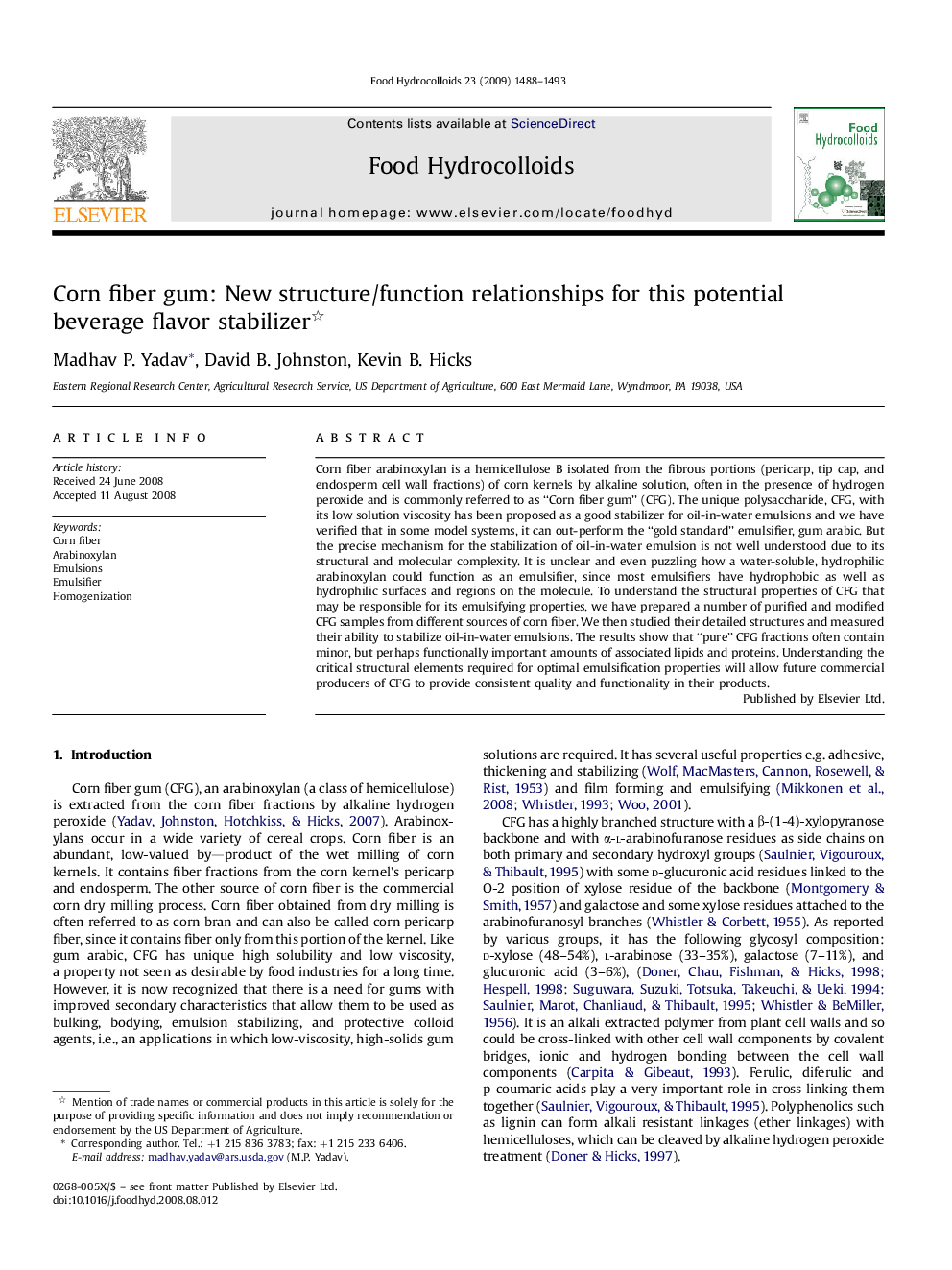| Article ID | Journal | Published Year | Pages | File Type |
|---|---|---|---|---|
| 604814 | Food Hydrocolloids | 2009 | 6 Pages |
Corn fiber arabinoxylan is a hemicellulose B isolated from the fibrous portions (pericarp, tip cap, and endosperm cell wall fractions) of corn kernels by alkaline solution, often in the presence of hydrogen peroxide and is commonly referred to as “Corn fiber gum” (CFG). The unique polysaccharide, CFG, with its low solution viscosity has been proposed as a good stabilizer for oil-in-water emulsions and we have verified that in some model systems, it can out-perform the “gold standard” emulsifier, gum arabic. But the precise mechanism for the stabilization of oil-in-water emulsion is not well understood due to its structural and molecular complexity. It is unclear and even puzzling how a water-soluble, hydrophilic arabinoxylan could function as an emulsifier, since most emulsifiers have hydrophobic as well as hydrophilic surfaces and regions on the molecule. To understand the structural properties of CFG that may be responsible for its emulsifying properties, we have prepared a number of purified and modified CFG samples from different sources of corn fiber. We then studied their detailed structures and measured their ability to stabilize oil-in-water emulsions. The results show that “pure” CFG fractions often contain minor, but perhaps functionally important amounts of associated lipids and proteins. Understanding the critical structural elements required for optimal emulsification properties will allow future commercial producers of CFG to provide consistent quality and functionality in their products.
